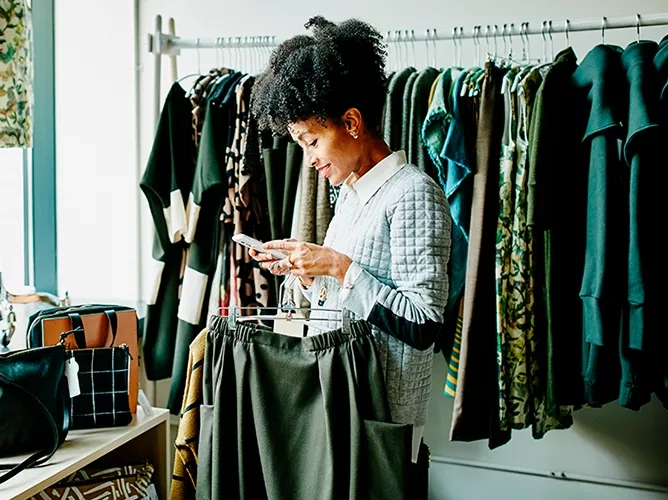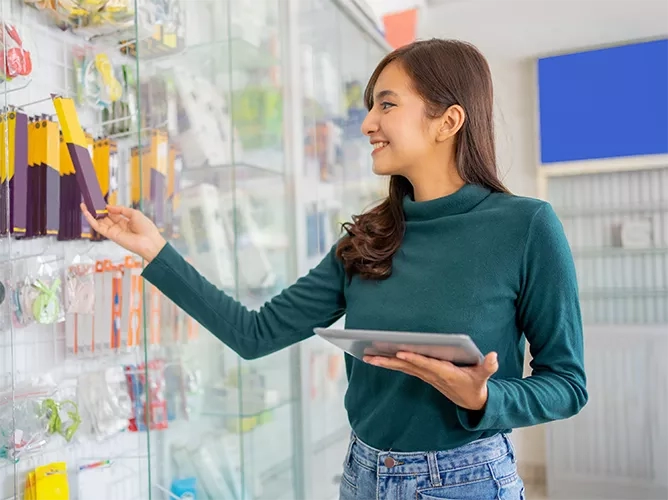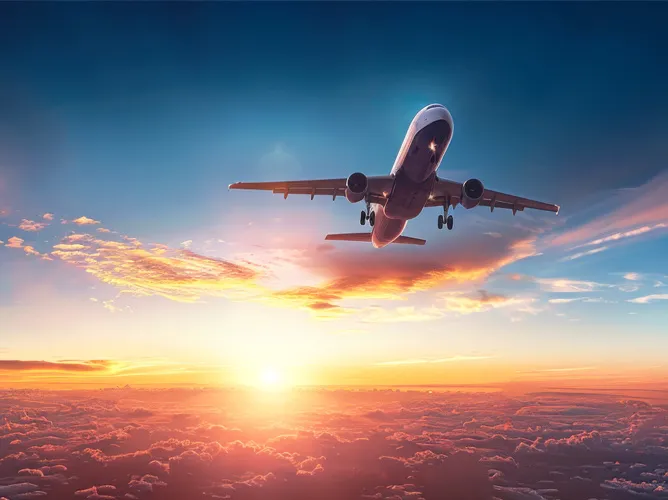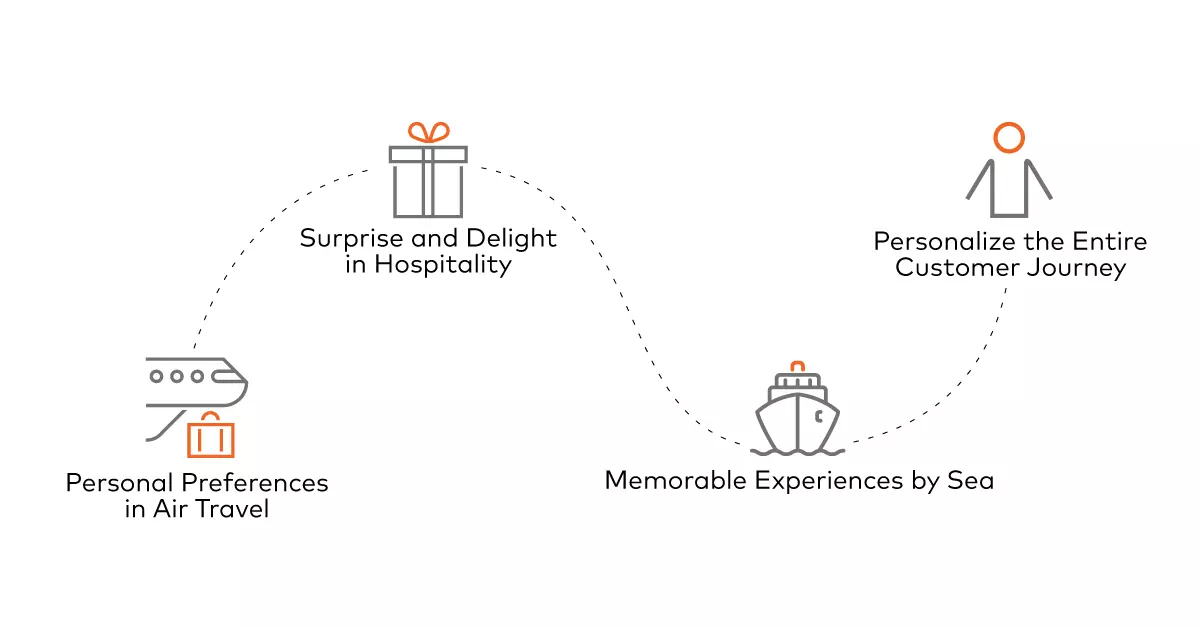Organizations that can deliver a unique in-person experience have an edge over the competition
Personalization may not provide the competitive advantage you think it does — if you're only thinking in the digital space, that is. Consider this scenario: A traveler discovers a discounted room offer through a hotel's loyalty program app, chooses a junior suite away from the elevators and reserves the airport shuttle for 1:00 p.m. After arriving and settling in, nothing substantial happens and she has a pleasant stay.
While this might sound okay to most hotel managers, this traveler will only think of the online booking experience as easy and customized to her needs. Her actual stay, though? Perhaps less remarkable. This gap between the travelers online and in-person experience represents an opportunity for brands to deliver more memorable moments and drive brand loyalty.
Closing this gap is increasingly important, as research shows that the organizations that can successfully deliver personalized experiences, including those in the travel industry, see better financial performance. A Mastercard-sponsored Harvard Business Review report shows that more than half of respondents cite customer personalization as an important way to increase revenue and profits. But if you're only focusing on email campaigns, social media, chatbots or automated call centers, you and your customers are missing out.
The report also revealed that in-person customer experience is the number two driver of personalization ROI today and through 2020 — ahead of online customer experiences, and just trailing product offerings and recommendations. In an industry that continues to change and grow, travel companies are looking to in-person experiences as a way to personalize the customer journey from start to finish and gain a competitive edge.
Personal Preferences in Air Travel
Airlines that have begun using in-flight personalization strategies have found that providing personal, relevant touches can help build meaningful experiences and stronger relationships with travelers, ultimately differentiating their offerings from the competition.
United Airlines uses a handheld device to provide flight attendants with carefully selected information about travelers, such as whether they are frequent flyers or may have had a flight canceled, allowing them to tailor the in-flight experience accordingly. The technology extends the customer experience beyond the aircraft as well. Flight attendants are able to see which travelers have short connections and can help them deplane as quickly as possible to make their next flight.
Other airlines have taken to customizing in-flight entertainment and meals, for example, asking passengers to provide meal preferences before boarding. This provides a more customized flying experience while at the same time allowing airlines to reduce waste by loading only the selected meals.
Surprise and Delight in Hospitality
By following their social media accounts' real-time updates, staff members at Marriott International hotels strive to surprise and delight guests, taking the experience of personalization one step further. When one of their guests posted an image of a new engagement ring and geotagged the hotel they were staying in, the hotel delivered a bottle of champagne to her room. The guest then posted another image with the hotel branded champagne and glasses, including hashtags that helped provide positive publicity for the brand.
Most customers have come to expect tailored experiences — according to the aforementioned study, 90% of consumers expect organizations to know their interests and anticipate their needs.
Hotels that understand this expectation are able to make guests feel more at home by giving them the ability to customize their experience just the way they like it. Using a mobile app or voice commands, guests can change the temperature of the room, stream personalized content to the TV, close the blinds or place in-room orders, for example. Rolling out new personalized initiatives is exciting, but brands must carefully navigate the fine line between respecting personal privacy and leveraging insights to surprise and delight customers. Get the combination right, and you will have a winning personalization strategy that offers more value and memorable experiences to your customers.
Memorable Experiences by Sea
Almost 90% of people surveyed agree that as business models shift to digital, the opportunities for personalization will only continue to grow, impacting even those industries that in the past tended to offer a more ubiquitous experience. Cruise lines that once favored a more one-size-fits-all approach are buying into the trend, looking for ways to give people more control over their trip. Many cruise lines now offer passengers the ability to enter their preferences for meals, drinks and entertainment into a mobile app before they arrive. Aboard Princess Cruises by Carnival Corp., guests don a sleek bracelet called the OceanMedallion. This wifi-enabled wearable can unlock surprises, like ship-wide scavenger hunts, cabin doors that automatically open as someone approaches and ready-made, custom drinks upon arrival at the pool. It also doubles as a convenient payment method and provides easy access to guest's itineraries and streaming entertainment preferences.
Personalize the Entire Customer Journey
More than half of organizations plan to invest in customer personalization so they can improve the customer relationship, increase customer retention and boost revenue. For organizations that plan to do the same, it's important to remember that personalization shouldn't stop once a passenger or guest turns off their screen. It won't always be easy to make the jump from a personalized digital experience to a truly unique real-life one, but that shouldn't discourage organizations from testing new options and learning from the results. Organizations should set up controlled business experiments for different customer segments to learn how they respond to different offerings. This will create a wealth of insights into the preferences of different segments that can, in turn, define the nuances of a personalization strategy. It also provides organizations with the chance to fail, and fail quickly, without the risk of a full program rollout.
By using these data-driven insights to improve in-person interactions, you can provide a seamless experience throughout the entire customer journey, keeping travelers happy and your competitive edge intact.
Subscribe to the Compendium
Thought leadership and insights on today’s industry trends and innovations








